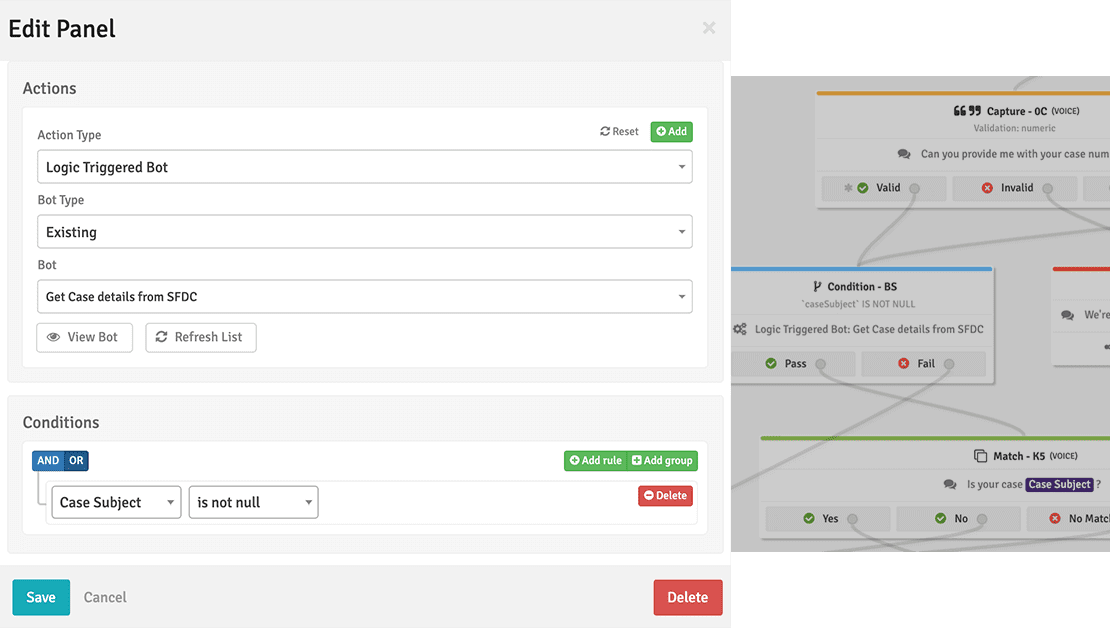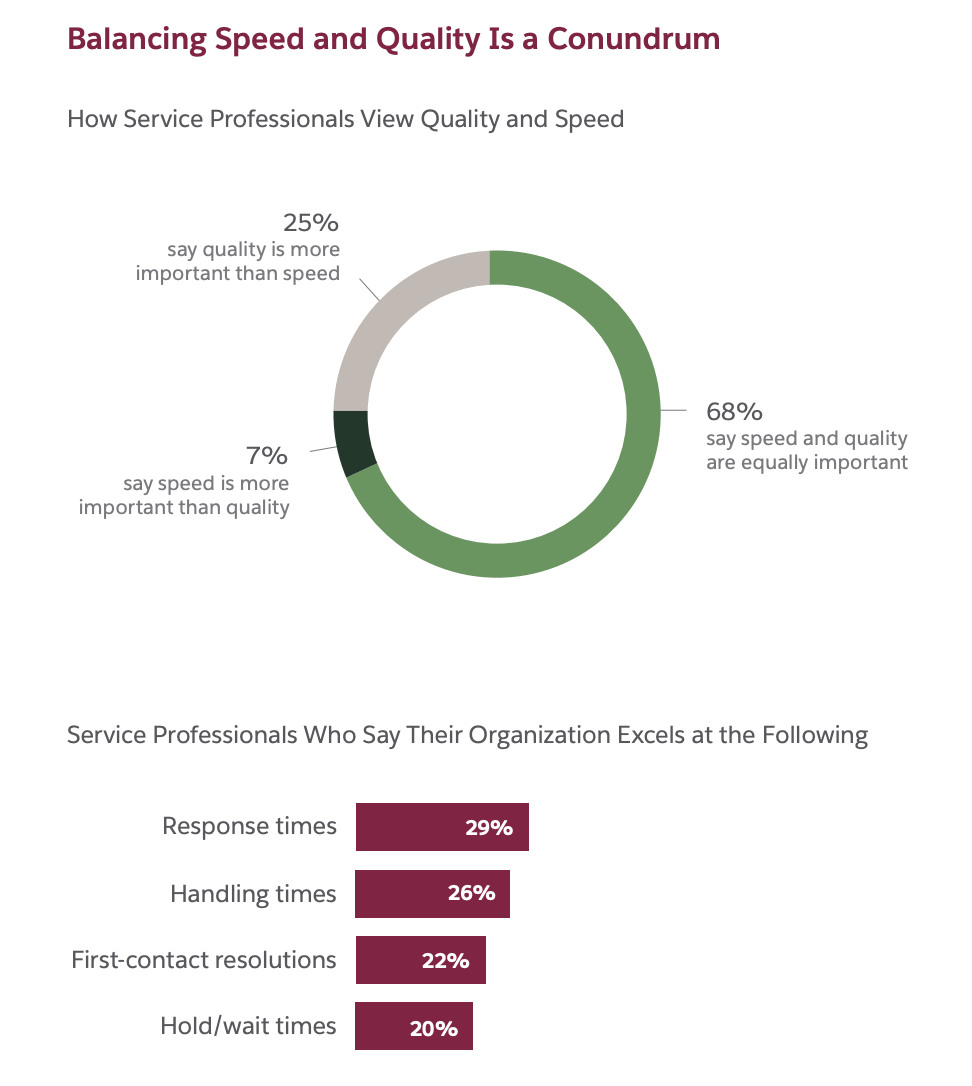
Customer Service Research Finds Trends to Shift Your Contact Center Priorities
Companies see more than $1.6 trillion in annual losses from bad customer service. And 82% of customers have stopped doing business with a company because of their bad customer experience.
Statistics like these make almost every customer service leader shudder (the good ones, at least). What’s more?
All this research on customer service reveals the priorities you try to juggle. You feel constant pressure to improve your customer experience, keep customers happy, keep costs low, and develop an entire team of supervisors and agents. (What’s a lunch break?)
And as this pressure mounts, customer expectations grow simultaneously. Tomorrow your customers will beg for more from your brand than they did today. And the next day… yep, you guessed it. They’ll still want more. So on top of all your other tasks, you’re constantly re-aligning to new customer expectations to avoid losing customers (and revenue).
To keep up with heightened expectations (and your ever-expanding to-do list) you have to prioritize what matters most to customers. If not, you’ll bounce from project to project without ever making real progress. So today, let’s dive in on what customer service research reveals as the top three priorities for contact centers this year.
Trend #1: Omnichannel Customer Service is Bigger than Ever Before
Last summer, I reached out to Bed Bath & Beyond on Twitter when I found out my new Instant Pot was broken (before I even took it out of the box). An agent responded and we moved the conversation to a live chat. Then, we jumped over to email so I could send in a picture. All the while, I talked to the same (insanely patient) person who guided me through the process to get a replacement.
Customers expect to reach out to companies on the channels they use most (like texting) and get a response. Today’s strongest contact centers meet the omnichannel expectation. They offer unified service through a number of channels, tailored to customers’ needs and preferences. Why? Because customers want control over their experience.
In fact, 86% of customers now expect their service interactions to move seamlessly across any channel they want to use. And, your strategy needs to support customer preferences every step of the way.
[Read Next] How to prepare for the future of customer service
While the phone is still the most popular service channel, especially for complicated questions, it’s no longer your customers’ go-to channel for a first touch. The Contact Center Satisfaction Index out of CFI Group found that 72% of customers visit your website or knowledge base to resolve their issues before they contact customer service. And, social media outlets are growing as a way to interact with customer service, too. (Like my outreach on Twitter.)
In a post-pandemic world, the reliance on digital channels will only grow. Not only did COVID cause businesses to pivot fast, but it also reshaped the behaviors of modern customers. Now, customer service research shows more than 82% of customers feel comfortable using digital channels, chatbots, and self-service options.
Trend #2: Automation is Becoming Mainstream
Technology in the service experience is more than just the IVR you punch through at the start of a phone call. Now, chatbots can carry an entire conversation and solve basic customer service issues, in real-time. You can monitor for triggers in customer conversations (then respond and coach your agents on those triggers). And, you can automate reports to send to key stakeholders weekly.
With technology’s role expanding in the contact center, companies need to think about how to connect with their customers in an authentic way.
Companies (like Sharpen!) are re-imagining automation and IVR to reduce contact center costs and provide better self-service tools.
With modern automation, you can trigger bots to handle simple tasks for you, like:
- Answer simple questions for your customers, like “What’s my password?”
- Grab customer information from one of your other connected systems, like Salesforce or Zendesk, and deliver it to your agents in a screen pop.
- Route calls to the right agent, at the right time – freeing your team up for interactions where customers need help with more complex problems.

But don’t rely on automation alone. If a customer takes the time to call your contact center, their goal is to solve their problem fast. The same research study out of CFI Group found that 50% of all callers who reach a customer service IVR skip right past it. By the time your customers decide to call your contact center, they’re ready to talk to an agent ASAP.
Plus, some 79% of customers still prefer to call their contact center for more complex problems. The human touch over the phone is highly valued. But, consider how automation can support your contact center and facilitate better human interactions.
Taking simple issues out of your queues and solving them with self-service or automation saves your agents from spending all their time on repeat questions. And, it saves your customers the frustration of having to reach out in the first place.
One of our customers here at Sharpen started experiencing a big uptick in interaction volume last year. They automated pieces of their IVR to problem-solve for customers and ended up reducing call volume by 15%. Oh, and they improved customer satisfaction because they gave customers what they wanted – autonomy to solve problems themselves.
As more customer service teams turn to automation, more use cases will emerge. Keep your eyes open.
[Read Next] 4 ways to improve customer service with automation (and stay human)
Trend #3: Customers Demand a Balance Between Speed and Quality
Traditional metrics like First Contact Resolution and Average Speed of Answer are still critical to a successful contact center. Convenience and promptness are only on the rise in the modern service culture.
Accenture dubbed the modern customer the Nonstop Customer. In their Customer 2020 Strategy, they found 80% of consumers who switched to a competitor due to poor service would’ve stayed if an agent resolved their issue the first time they reached out.
Customers are fed up with having to reach out more than once because of the same issue. Almost as fed up as they are with having to sit on hold forever (and ever and ever.) Data out of the U.K. found that only one in five customers gets through to a business the first time they call. How can customers fix an issue if they can’t even reach you to tell you about it?
Turns out, agents are struggling to find a balance between delivering fast service and delivering good service. Last year alone, 63% of agents in Salesforce’s State of Customer Service research report said it’s tough to find a balance between speed and quality.
Low FCR is an indicator that your agents need stronger coaching and more resources to better serve customers. And high hold times tell you that your agents are overwhelmed. Feeling overwhelmed and unprepared leads to burnout – a recipe for disaster in your contact center.
Build up your agents’ confidence to improve traditional efficiency and quality metrics. Coach your team and give them access to the customer data they need to solve problems. More autonomy is critical to handle an issue effectively (and fast) for less-frustrated customers.
[Read Next] The 5 customer satisfaction metrics you can track for a boost to ROI
Above all, be human
In spite of the rising popularity of automation and digital channels in customer service, human interaction is still critical. Companies that care deeply about authenticity and empathy excel in delivering better customer service.
Your agents are on the front lines of human interaction. Automation can’t replace the human connection many customers want when they call, email, or chat with your contact center. Continue to value the power of communication, humility, and empathy when you interact with customers. Use technology as a tool to optimize your time, but don’t neglect building a strong, empowered workforce in your contact center.
We originally published this article on November 3, 2016 and updated it for tone and accuracy on May 27, 2021.



